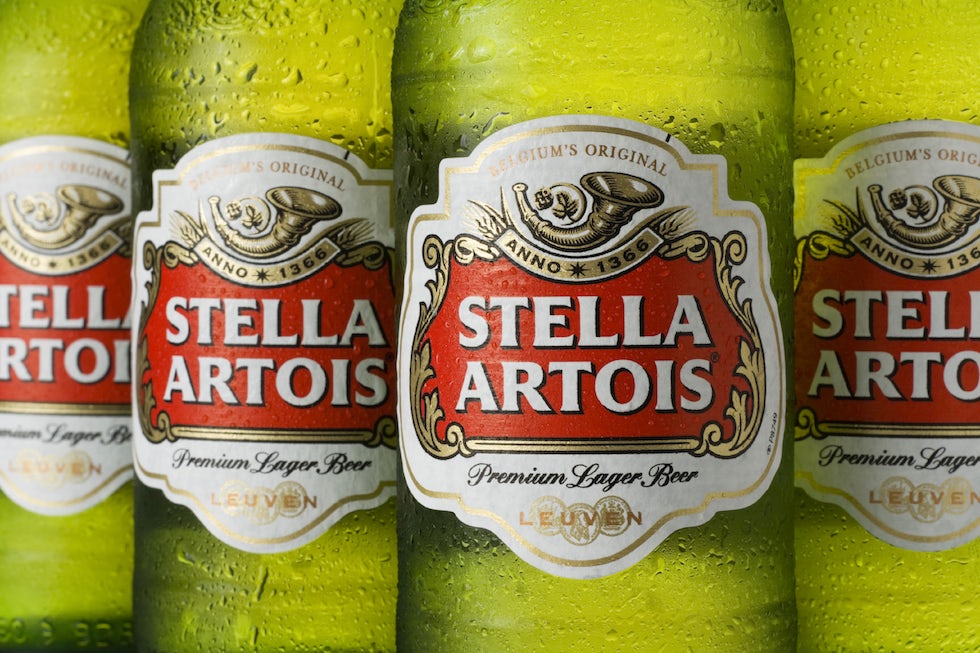Why marketing will be more important than ever if AB InBev and SABMiller merge
With an AB InBev and SABMiller takeover on the cards, Marketing Week explores whether the never-ending quest for global expansion could lead to a consumer backlash.

AB InBev, owner of beer brands including Budweiser and Stella Artois, has approached its rival SABMiller about a takeover that could lead to the creation of a “monster beer company”.
SABMiller stated that while it had been informed that AB InBev intends to make a takeover proposal, no bid has yet been received.
A combination of the brewers would create a company with a market value of about £162bn and bring together brands like Stella Artois and Budweiser with SABMiller’s brands, including Peroni, Grolsch and British craft beer Meantime.
Cost savings and global expansion
An AB InBev buyout would predominantly be beneficial from a cost saving point of view, as the brewer could save on production, ingredients, employee count and possibly in marketing.
“In that sense, [a takeover] would undoubtedly boost profit margins,” says Euromonitor International senior alcoholic drinks analyst Spiros Malandrakis.
At the moment, the global beer market is still relatively fragmented. AB InBev is responsible for around 18% of global beer production, while SABMiller has a 10% stake.
“The beer sector is still ripe for M&A activity, particularly given the underperforming Western markets where people’s beer consumption is in long-term decline,” Mintel global drinks analyst Jonny Forsyth explains.
UK figures from Mintel show that pressures on household finances, health concerns and competition from other markets have led to significant volume sales decline over the past five years, falling to 4.19 billion litres in 2013.
As a result, a takeover could widen the brewer’s geographic footprint. AB InBev’s interest in SAB revolves mainly around greater access to Africa, which has been named “the new beer frontier”.
“Close to a third of SAB’s profits come from that region, whereas AB InBev has a very limited presence there. Seven out of the top 10 growing economies are also in Africa,” Forsyth explained.
Consumer backlash ahead?
While big businesses keep merging, consumer trends seem to be going in the opposite direction. The public is steadily moving away from big brand offerings and choosing craft beer instead.
Creating a giant beer company in a time when consumers are seemingly averse to big brands could be counterproductive.
“We’ve seen in the last couple of years that when big brands acquire craft brewers, a backlash happens. What will be the backlash with this monster beer company if they try to take over craft beer?” asks Malandrakis.
Misjudged marketing is part of the problem
In the face of falling sales, many brands don’t seem to understand that alcohol is a lifestyle industry that reacts to broader shifts in popular culture.
For example, the popularity of TV shows like Mad Men and Boardwalk Empire has led to increased interest in cocktails, creating references and narratives for them to become cool once more.
“It explains why people want to be seen holding a specific drink in their hand. Marketing is even more important than what is actually in the bottle,” commented Malandrakis.
Maxus’ global head of planning Nick Vale believes the challenge for companies is to stop telling consumers that they are a cool brand and ensure their communications ignite passion.
“A lot of the old rules of doing alcohol communications are changing quickly and there are brands that need to start to take a look at the way they have traditionally acted and revise that,” he says.
- Do you want to ensure your brand’s campaign gets the recognition it deserves? Enter the consumer goods category in this year’s Masters of Marketing. Go to the Masters site for details of how to enter.






